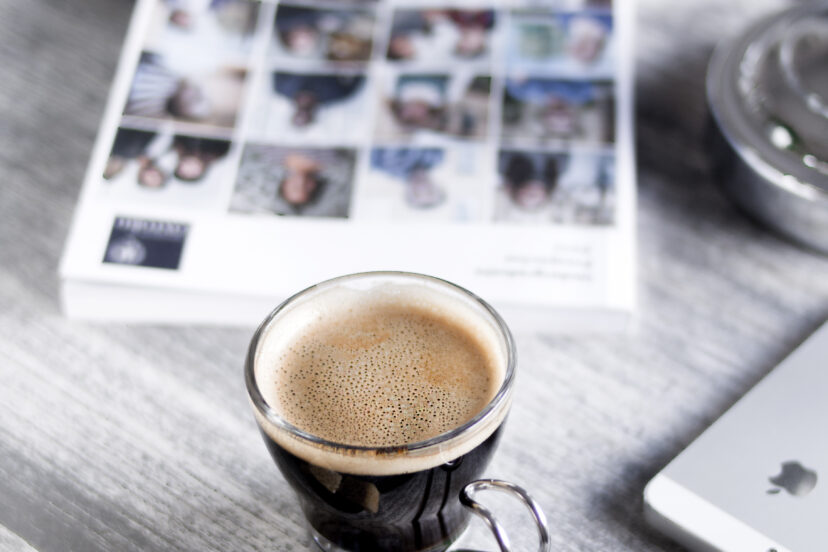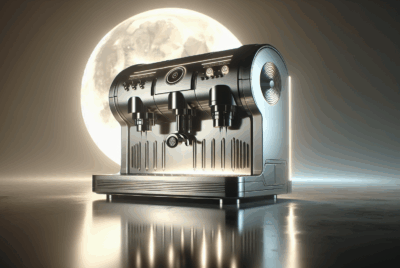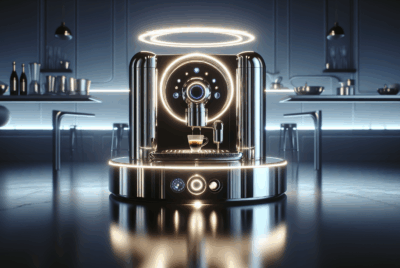What is Espresso?
As an Amazon Associate, I earn from qualifying purchases, at no additional cost to you. Disclaimer
I’ve always been curious about the rich and aromatic drink that is espresso. From its origins to its unique brewing process, espresso has become a staple in the coffee world. In this article, we’ll explore the fascinating world of espresso, uncovering its secrets and uncovering what makes this bold and intense beverage so beloved by coffee enthusiasts worldwide. Prepare to embark on a caffeinated journey as we unravel the mystery behind what is espresso.
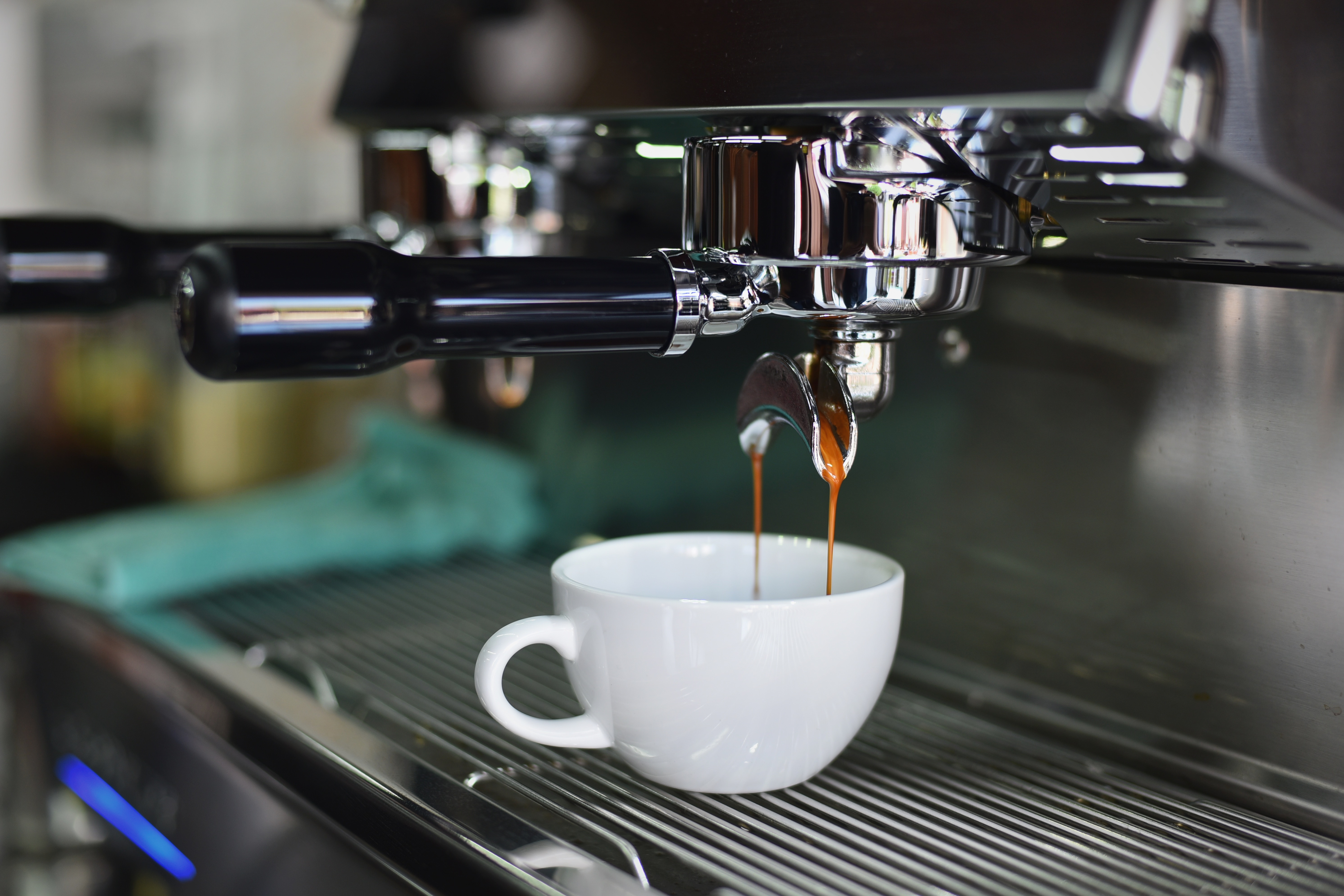
Overview of Espresso
Defining Espresso
Espresso is a concentrated form of coffee that is made by forcing hot water through finely ground coffee beans. It is a strong, flavorful, and aromatic beverage that has become increasingly popular worldwide. Unlike regular coffee, which is brewed by mixing coffee grounds with hot water, espresso is made using a specialized espresso machine that creates pressure to extract the flavors and oils from the coffee beans. This results in a rich and intense cup of coffee that is often enjoyed on its own or as the base for other espresso-based beverages.
Origin and History
The origins of espresso can be traced back to Italy, where it was first created in the early 20th century. The invention of the espresso machine revolutionized the way coffee was made and consumed. The first espresso machines were large and bulky, but over time, they became more compact and efficient, making espresso accessible to a wider audience.
It quickly gained popularity in Italy and soon spread to other parts of Europe. It wasn’t until the mid-20th century that espresso made its way to the United States, where it eventually became a staple in coffee culture. Today, it’s is enjoyed worldwide and has become an integral part of many people’s daily routines.
Espresso vs. Regular Coffee
One of the key differences between espresso and regular coffee lies in the brewing process. While regular coffee is brewed by steeping coffee grounds in hot water, espresso is made by forcing pressurized water through densely packed coffee grounds. This extraction process gives it its characteristic strength and rich flavor.
Another difference between espresso and regular coffee is the amount of coffee used. A typical espresso shot contains about 1 to 1.5 ounces of coffee, while a cup of regular coffee usually contains around 8 ounces. The higher concentration of coffee in espresso contributes to its bold taste and higher caffeine content compared to regular coffee.
Espresso also has a distinct appearance, with a layer of creamy foam called crema on top. This crema is created during the espresso brewing process and adds a velvety texture to the beverage. In contrast, regular coffee does not typically have this layer of crema.
How Espresso is Made
Ingredients and Equipment
To make a shot of espresso, you will need a few key ingredients and specialized equipment. The main ingredients are coffee beans and water. It is crucial to use high-quality coffee beans for the best-tasting espresso. Arabica beans are commonly used for their desirable flavors and aromas.
The equipment needed to brew includes an espresso machine, a grinder, a tamper, and a scale. An espresso machine is essential for creating the necessary pressure to extract the flavors from the coffee. A grinder is used to grind the coffee beans to the right consistency, and a tamper is used to pack the coffee grounds into the portafilter. A scale is also useful for accurately measuring the coffee and water ratios.
The Process
The process of making espresso involves several steps. First, the coffee beans are ground to a fine consistency. The grounds are then measured and placed into the portafilter, which is a small metal basket that holds the coffee. The grounds are then tamped down firmly to ensure an even extraction.
Once the coffee is ready, the portafilter is attached to the espresso machine, and the brewing process begins. Hot water is forced through the coffee grounds under high pressure, typically around 9 bars. This pressure extracts the flavors and oils from the coffee, resulting in a concentrated and aromatic shot of espresso.
The brewing time is relatively short, typically between 20 to 30 seconds. This quick extraction helps to prevent over-extraction, which can result in a bitter taste. The espresso shot is collected in a small cup or shot glass and is ready to be enjoyed immediately.
Variations and Types of Espresso
While a classic shot of espresso is the foundation of many espresso-based beverages, there are also various variations and types of espresso.
Some popular variations include:
- Ristretto: A shorter and more concentrated shot typically made with the same amount of coffee but half the amount of water. This results in a bolder and more intense flavor.
- Lungo: A longer extraction time resulting in a larger and less concentrated shot. This can make the flavor slightly more bitter.
- Double Espresso: A double shot using twice the amount of coffee and water. This creates a stronger and more robust flavor.
- Espresso Macchiato: A single shot with a small amount of milk foam or steamed milk added on top.
These variations allow espresso enthusiasts to customize their beverages to suit their preferences and create a unique tasting experience.
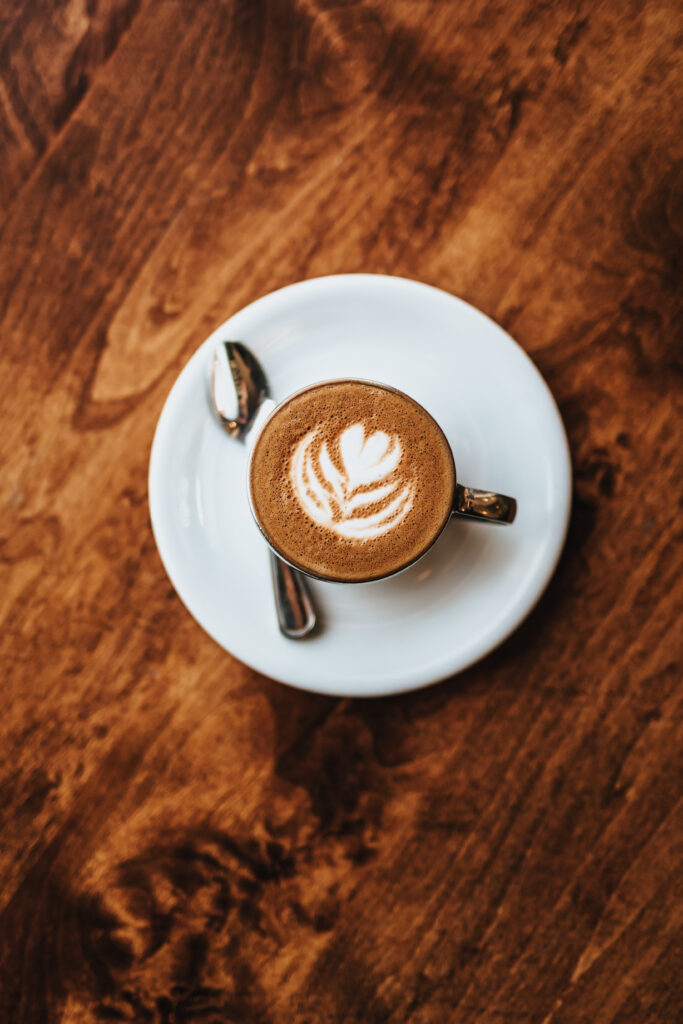
The Art of Making Espresso
Role of Baristas
Baristas play a crucial role in the creation of a perfect espresso. They are skilled professionals who have extensive knowledge about coffee, brewing techniques, and the use of the required equipment. It is their expertise that ensures each shot is extracted with precision and consistency.
A barista meticulously selects and grinds the coffee beans, ensuring the correct grind size and consistency to achieve the desired flavors. They also adjust the espresso machine’s parameters, such as water temperature and pressure, based on the particular coffee beans and the desired flavor profile.
Furthermore, baristas are trained to monitor the extraction process and adjust the variables accordingly. This attention to detail ensures that every shot meets the highest standards in terms of taste, aroma, and crema.
Understanding the Espresso Shot
An espresso shot consists of three distinct layers: the heart, the body, and the crema.
The heart is the bottom layer of the shot, and it contains the liquid coffee extracted from the coffee grounds. The body is the middle layer and is a combination of the heart and crema. The crema forms the top layer of the shot and is a creamy foam composed of coffee oils and carbon dioxide.
The color, thickness, and stability of the crema are crucial indicators of the quality of the shot. A rich, golden crema that lingers on the surface is a sign of a well-extracted espresso. The crema adds a pleasant mouthfeel and enhances the overall flavor.
Extracting the Perfect Shot
Extracting the perfect shot of espresso requires careful attention to various factors, such as the coffee-to-water ratio, grind size, water temperature, and extraction time.
Maintaining the correct coffee-to-water ratio is crucial in achieving the desired flavors and strength. The ideal ratio is generally considered to be 1:2, which means using 18 grams of coffee for a 36-gram espresso shot. However, experimentation and personal preference can lead to adjustments in this ratio.
The grind size of the coffee is also crucial. Finer grinds extract more quickly, while coarser grinds extract more slowly. Achieving the perfect grind size helps to optimize the extraction process and prevent under- or over-extraction.
Water temperature is another essential factor in producing an excellent shot. The water should be heated to around 195 to 205 degrees Fahrenheit (90 to 96 degrees Celsius) to ensure proper extraction of flavors. Water that is too hot or too cold can result in an imbalanced or weak-tasting espresso.
The extraction time, typically around 20 to 30 seconds, is a critical parameter in controlling the flavors and strengths of the shot. Adjusting the extraction time allows baristas to fine-tune the taste and ensure that it’s not over-extracted, resulting in a bitter flavor, or under-extracted, resulting in a weak and watery taste.
By carefully controlling these variables and continuously experimenting, baristas can achieve the art of making the perfect shot.
Characteristics of Espresso
Flavor Profile
Espresso has a distinct flavor profile that sets it apart from regular coffee. It is known for its intense and complex taste, with rich chocolaty, nutty, and caramel notes. The flavor is often described as bold, full-bodied, and with a pleasant acidity.
The specific taste can vary depending on various factors, including the origin and roast level of the coffee beans, the extraction process, and the skills of the barista. Each shot is unique, offering a sensory experience that coffee lovers appreciate.
Aroma
The aroma is one of its most enticing qualities. As the hot water extracts the coffee flavors, it releases a captivating scent that fills the air. The aroma is often described as deep, earthy, and inviting, evoking a sense of comfort and satisfaction.
The complexity of the aroma is influenced by factors such as the type of coffee beans used, the roast level, and the brewing technique. It is an integral part of the overall experience, enhancing the anticipation and enjoyment of each sip.
Body and Crema
The body of espresso refers to its texture and mouthfeel. It’s known for its full-bodied and velvety texture, which coats the palate with richness and depth. The carefully extracted oils from the coffee beans contribute to this luxurious mouthfeel.
The crema, as mentioned earlier, is a layer of creamy foam that sits on top of the shot. It adds a silky and smooth texture to the beverage, enhancing the overall sensory experience. The crema should be thick, golden, and long-lasting, indicating a well-extracted shot.
Caffeine Content
Contrary to popular belief, espresso does not necessarily have more caffeine than regular coffee. While the concentration of caffeine is higher in a serving of espresso due to its smaller volume, a typical shot contains about 63 milligrams of caffeine, while an 8-ounce cup of regular coffee can contain anywhere from 95 to 200 milligrams of caffeine.
The perception of espresso being stronger and more energizing can be attributed to its concentrated flavor profile and the consumption method. The quick consumption of a small volume of espresso can provide a more immediate effect, making it a popular choice for those seeking a quick pick-me-up.

Popular Espresso-based Beverages
Cappuccino
Cappuccino is a classic espresso-based beverage that consists of equal parts espresso, steamed milk, and milk foam. It is known for its distinct layering, with the espresso shot at the bottom, followed by the steamed milk, and topped with a thick layer of milk foam. Cappuccinos are often dusted with cocoa or cinnamon for added flavor and decoration.
The combination of the rich espresso, velvety steamed milk, and airy milk foam creates a harmonious balance of flavors and textures. Cappuccinos are typically served in smaller cups and are enjoyed as a morning or mid-day treat.
Latte
A latte is another popular espresso-based beverage that is made with espresso and steamed milk. Unlike cappuccinos, lattes have a higher milk-to-espresso ratio, resulting in a lighter and creamier drink. Lattes are often served in larger cups and can be customized with flavored syrups or toppings such as whipped cream or caramel drizzle.
The smooth and mellow taste of lattes, combined with the aromatic espresso, creates a comforting and satisfying beverage. Lattes are a favorite choice for those who prefer a less intense coffee flavor and enjoy the creaminess of steamed milk.
Macchiato
A macchiato is a small and concentrated espresso-based beverage that combines a shot of espresso with a small dollop of milk foam on top. The word “macchiato” means “stained” or “marked” in Italian, referring to the way the milk foam is added to the espresso shot.
Macchiatos offer a strong and robust coffee flavor with a touch of creamy sweetness from the milk foam. They are often served in smaller cups and are enjoyed as a quick and invigorating pick-me-up.
Mocha
Mocha, also known as a mochaccino, is a delightful combination of espresso, steamed milk, and chocolate. It is a popular choice for those who crave the indulgent flavors of coffee and chocolate. Mochas are typically topped with whipped cream and a dusting of cocoa powder.
The rich and velvety texture of the steamed milk, combined with the bold flavors of espresso and chocolate, create a decadent and comforting beverage. Mochas are often enjoyed as a dessert-like treat or as a comforting drink during colder months.
Americano
An Americano is a simple and straightforward espresso-based beverage that is made by diluting a shot of espresso with hot water. This results in a drink that has a similar strength to regular brewed coffee but with the distinct flavor profile of espresso.
Americanos offer a smoother and less intense flavor compared to straight espresso shots. They are often served in larger cups and are enjoyed by those who prefer a milder coffee taste or prefer a longer-lasting beverage.
The Culture of Espresso
Espresso and Italian Coffee Culture
Espresso has deep roots in Italian coffee culture and is an integral part of daily life for many Italians. In Italy, it’s typically consumed in a leisurely manner, with Italians often enjoying their espresso at a café while socializing or reading the newspaper. The Italian “bar” culture revolves around the consumption of espresso, with espresso bars being popular gathering places for locals.
Italians take their coffee very seriously and have perfected the art of espresso-making. The emphasis is on quality rather than quantity, and baristas in Italy are highly skilled individuals who take great pride in their craft. Espresso is considered a symbol of Italian culture and is enjoyed throughout the day, from morning to after-dinner.
Espresso in Different Countries
While it originated in Italy, its popularity has spread far beyond its borders. Nowadays, espresso is enjoyed in various forms and settings across the globe.
In countries like France and Spain, it’s is often consumed quickly and is a staple in many cafés and restaurants. In these cultures, it’s often seen as a quick and refreshing pick-me-up rather than a leisurely drink.
In the United States, espresso has become a cornerstone of the specialty coffee industry. The rise of third-wave coffee shops has brought a renewed appreciation for the art and science of espresso-making. Baristas in the U.S. often experiment with different brewing techniques, roast profiles, and unique flavor combinations to create innovative and exciting espresso-based beverages.
Espresso in Specialty Coffee Shops
Specialty coffee shops have played a significant role in promoting the culture of espresso. These establishments focus on sourcing high-quality coffee beans, using precise brewing methods, and providing an immersive coffee experience for customers.
Specialty coffee shops often have highly trained baristas who are committed to delivering the best possible espresso. They take pride in their craftsmanship and strive to create a memorable coffee experience for every customer. These shops often prioritize transparency, showcasing the origins and flavor profiles of the coffee beans they use.
The rise of specialty coffee has also brought attention to sustainability and direct trade practices in the coffee industry. Many specialty coffee shops work closely with coffee farmers and cooperatives to ensure fair compensation and environmentally responsible practices.
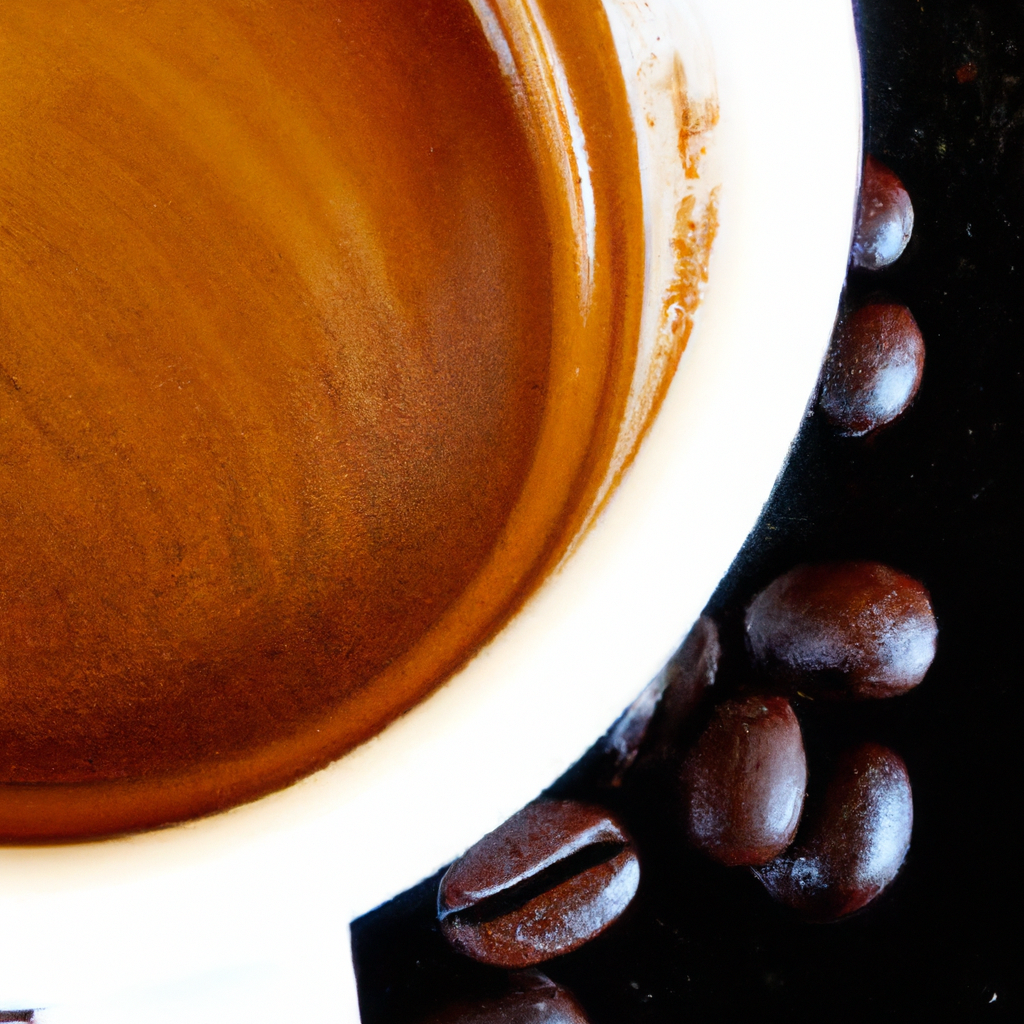
Health Effects and Benefits
Caffeine and Alertness
One of the well-known effects of espresso consumption is its ability to increase alertness and concentration. The caffeine found in espresso has a stimulating effect on the central nervous system, helping to combat drowsiness and promote wakefulness.
The precise amount of caffeine required for these effects can vary from person to person, and individuals may have different tolerances to caffeine. Generally, a single shot of espresso can provide a sufficient caffeine boost to help improve focus and enhance performance.
Antioxidants and Disease Prevention
Coffee, including espresso, is a rich source of antioxidants. Antioxidants play a crucial role in neutralizing harmful free radicals in the body, which can cause oxidative stress and contribute to the development of chronic diseases such as heart disease, certain cancers, and neurodegenerative disorders.
Research has suggested that regular coffee consumption, including espresso, may be associated with a reduced risk of various diseases, including Parkinson’s disease, liver disease, and certain types of cancer. However, it is important to note that individual responses to coffee can vary, and moderation is key.
Espresso and Weight Loss
Espresso has been found to have potential benefits for weight loss and weight management. The caffeine in espresso has been shown to increase metabolism and promote fat oxidation, potentially aiding in weight loss efforts.
However, it is important to note that any potential weight loss benefits of espresso are minimal and should not be relied upon as a sole means of achieving weight loss. A balanced diet and regular physical activity are crucial components of a healthy approach to weight management.
Moderation and Risks
While espresso can offer health benefits when consumed in moderation, it is essential to be mindful of the potential risks associated with excessive caffeine intake. Consuming too much caffeine can lead to adverse effects such as increased heart rate, insomnia, restlessness, and anxiety.
Individuals who are sensitive to caffeine or have certain medical conditions, such as high blood pressure or heart problems, should be cautious with their espresso consumption and consult with a healthcare professional if needed.
It is also important to note that espresso-based beverages that are loaded with added sugars, syrups, and high-fat milk can contribute to excess calorie intake and potentially negate any potential health benefits. Opting for simpler and more wholesome espresso drinks can be a healthier choice.
Common Misconceptions about Espresso
Espresso is Super Strong
One common misconception about espresso is that it is extremely strong and overpowering. While espresso is more concentrated than regular coffee due to its brewing method, it is not necessarily stronger in terms of caffeine content.
The strength of espresso refers to its rich and intense flavor, rather than its caffeine potency. The bold taste of espresso is a result of the careful extraction process and the higher coffee-to-water ratio.
Espresso is Bitter
Another misconception about espresso is that it is inherently bitter. While some espresso shots can exhibit bitterness, it is not an inherent trait of espresso. The bitterness of espresso can be influenced by various factors, including the coffee beans used, the roast level, and the extraction process.
When prepared properly, espresso can have a well-balanced and pleasantly complex flavor profile that includes sweetness, acidity, and bitterness in harmony. The bitterness can be minimized by carefully adjusting the extraction variables, such as grind size, water temperature, and extraction time.
Espresso is Only for Coffee Snobs
Espresso has often been associated with coffee snobbery, with the perception that only coffee connoisseurs can truly appreciate its flavors and nuances. However, this is far from the truth.
Espresso can be enjoyed by anyone, regardless of their coffee knowledge or preferences. Its bold taste and versatility make it a popular choice for many coffee enthusiasts. Whether sipped on its own or used as the base for other beverages, espresso offers a unique and enjoyable coffee experience for anyone who appreciates a quality cup of coffee.
Tips for Enjoying Espresso
Choosing Quality Beans
To enhance the enjoyment of espresso, it is crucial to start with high-quality coffee beans. Opt for freshly roasted beans from reputable sources. Look for beans that are specifically marked as espresso blends or single-origin coffees known for their espresso-like characteristics.
Experiment with different origins and roast profiles to discover your preferred flavor profiles. Consider exploring local specialty coffee shops or online vendors that offer a wide range of coffee options.
Grinding and Storage
Investing in a good quality grinder is essential for achieving consistent and optimal results with espresso. Burr grinders are recommended for espresso brewing as they offer precise and consistent particle size distribution.
Grind the coffee beans just before brewing to ensure maximum freshness and flavor. Aim for a fine and consistent grind size, as this is crucial in controlling the extraction process. Adjust the grind size as needed to achieve the desired flavors.
Proper storage of coffee beans is vital to preserve their freshness. Store them in an airtight container in a cool, dark place, away from direct sunlight, heat, and moisture. Avoid refrigerating or freezing the beans, as this can negatively impact the flavor and aroma.
Brewing at the Right Temperature
The temperature of the water used for brewing espresso is critical in achieving optimal extraction. The water should be heated to around 195 to 205 degrees Fahrenheit (90 to 96 degrees Celsius).
Ensure that your espresso machine is calibrated to heat the water within this temperature range. Overheated water can result in an overly bitter flavor, while water that is too cool may lead to under-extraction and a weak-tasting espresso.
Experimenting with Flavors
One of the joys of espresso is its versatility and the ability to experiment with various flavors and additions. Consider adding a dash of cinnamon, vanilla extract, or a twist of orange peel to your espresso shot for a subtle flavor boost.
Experiment with different milk options, such as almond milk or oat milk, to create dairy-free variations of classic espresso-based beverages. You can also explore flavored syrups or sauces to add a touch of sweetness or unique flavors to your espresso creations.
Conclusion
Espresso is a beverage that offers a unique and intense coffee experience. From its origins in Italy to its global popularity, espresso has become synonymous with rich flavors, inviting aromas, and a vibrant coffee culture. Whether enjoyed on its own or as the foundation for other espresso-based beverages, it presents a world of possibilities for coffee lovers.
The art of making espresso requires skill, precision, and attention to detail. The role of baristas in crafting the perfect shot cannot be overstated. By understanding the characteristics of espresso, such as its flavor profile, aroma, body, and crema, coffee enthusiasts can fully appreciate the complexities and nuances of their favorite beverage.
With a wide range of espresso-based beverages available, such as cappuccinos, lattes, and macchiatos, there is something for everyone to enjoy. The cultural significance of espresso is evident in its deep roots in Italian coffee culture and its influence on coffee consumption worldwide.
While espresso offers potential health benefits, moderation is key, and individuals should be mindful of their caffeine intake. By dispelling common misconceptions about espresso and following tips for enjoying the perfect cup, coffee enthusiasts can fully embrace the world of espresso and savor its pleasures.
Whether you are a seasoned espresso lover or new to the world of espresso, taking the time to appreciate the flavors, aromas, and artistry behind this beloved beverage can elevate your coffee experience. So sit back, relax, and savor that perfectly brewed shot of espresso – you deserve it.

